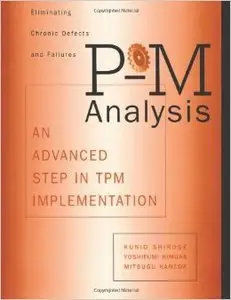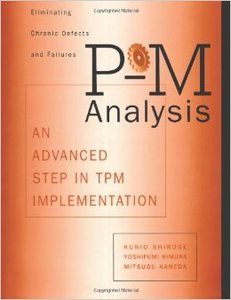Shirose Kunio, Mitsugu Kaneda, "P-M Analysis: An Advanced Step in TPM Implementation"
English | 2004 | ISBN-10: 1563273128 | 200 pages | PDF | 16 MB
English | 2004 | ISBN-10: 1563273128 | 200 pages | PDF | 16 MB
In this large-format implementation manual, TPM experts explain P-M Analysis. (A methodology that makes zero losses a reality in your TPM program.) P-M Analysis is designed to help your TPM teams analyze and eliminate chronic problems that have been neglected or unresolved in the past.
Chronic quality defects and other chronic losses are hard to eradicate, because they typically have multiple, interrelated causes that vary with every occurrence. Common improvement strategies, like cause-and-effect analysis, are usually ineffective in dealing with such complex problems. P-M Analysis was specially developed to overcome the weaknesses of traditional methods. It offers a rigorous 8-step method for ensuring that all possible factors are identified and investigated.
Through P-M Analysis, teams really get in touch with their equipment. Its unique skill-building process improves technological know-how while delivering solutions to persistent problems. The first four steps of this rigorous 8-step program help teams isolate and understand the root causes of defects and failures within main equipment mechanisms and peripheral systems. The final four steps provide a systematic approach for effectively controlling those causes.
A critical concept in P-M Analysis is physical analysis – a way of thinking about how defects and failures are generated that forces us to look at the physical principles involved and to quantify the changes in the relationship between the equipment mechanisms and product parts involved. When a proper physical analysis is carried out, teams are far less likely to overlook important factors or to waste time pursuing unrelated ones. Although not a cure-all, P-M Analysis has reduced chronic losses to zero and raised technological expertise in many manufacturing environments.
This illustrated implementation manual provides a thorough step-by-step procedure for implementing P-M Analysis, along with practice exercises and graded examples. It is an unparalleled resource for anyone with a basic knowledge of TPM who is ready to fine-tune their loss-reduction activities. Here, finally, is a root-cause analysis method that will help teams achieve the ultimate goal of zero losses.



